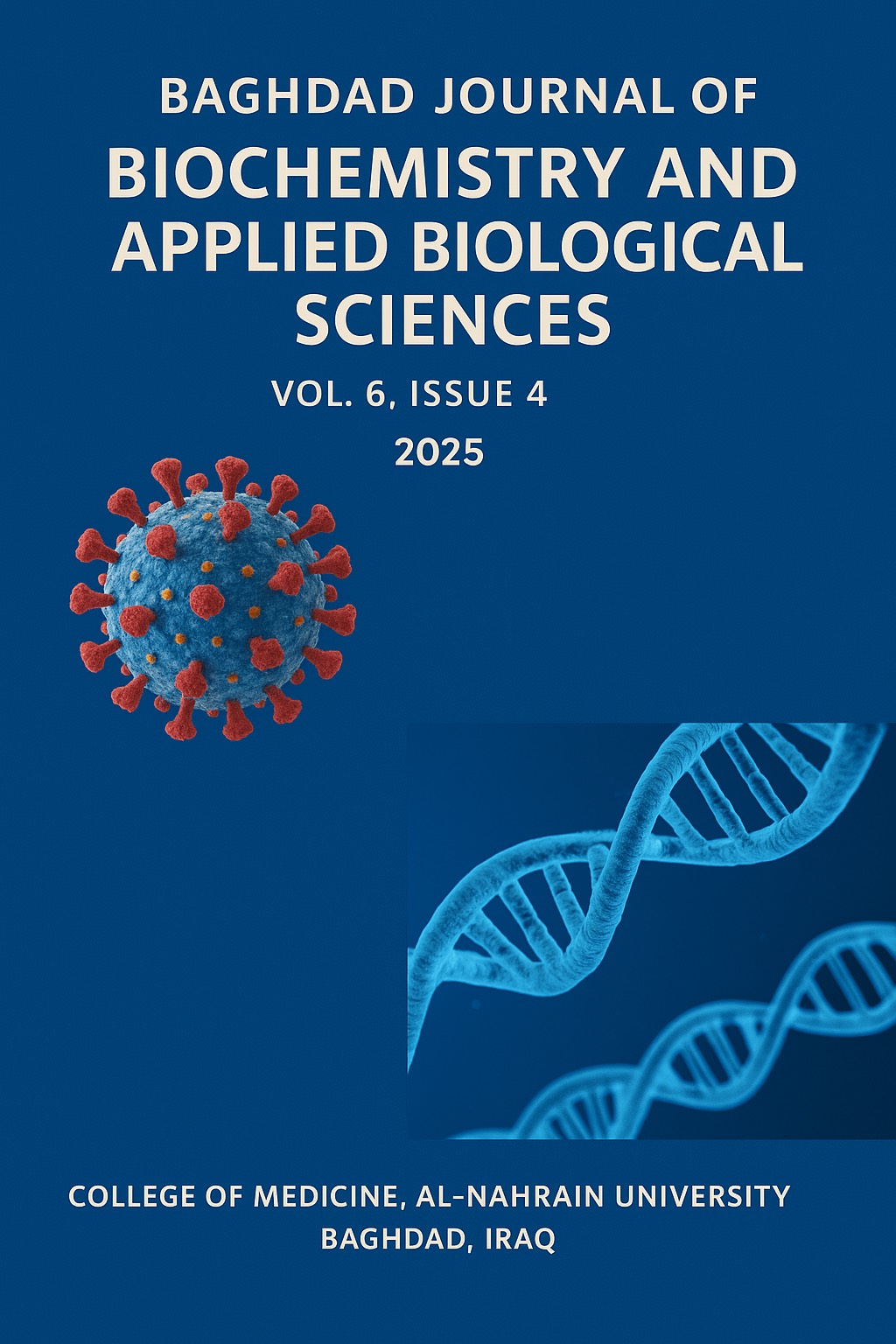Partial Purification and Biochemical Characterization of L-lysine α-Oxidase from Clinical Isolates of Pseudomonas aeruginosa
DOI:
https://doi.org/10.47419/bjbabs.v6i4.410Keywords:
L-lysine-α-oxidase , P. aeruginosa , enzyme purification , characterizationAbstract
Background: L-lysine α-oxidase (LO) is an oxidative enzyme with notable therapeutic and industrial potential due to its capacity to degrade lysine and generate cytotoxic by-products
such as hydrogen peroxide. Pseudomonas aeruginosa is a known microbial source of LO, and its
clinical prevalence in nosocomial infections supports its exploration for enzyme production.
Methodology: A total of 130 clinical samples were collected from various infection sites in
Baghdad hospitals between October and December 2024. LO production was screened, and the
most productive isolate (P6) was selected for purification and characterization. Purification
involved ammonium sulfate precipitation, DEAE-cellulose ion-exchange chromatography, and
Sephadex G-150 gel filtration. The enzyme was further characterized by SDS-PAGE, and its
activity and stability were tested under varying pH, temperature, metal ions, and inhibitor
conditions.
Results: A total of 130 clinical samples were collected from different infection sites, including wounds, burns, urine, and sputum. Out of these, 20 isolates (15%) were identified as
Pseudomonas aeruginosa. The initial identification was based on colony morphology on cetrimide agar, characteristic pigmentation, and Gram staining. Further confirmation was achieved
through standard biochemical tests (oxidase positive, growth at 42 °C, etc.) and automated
identification using the VITEK 2 system. The specific activity of LO reached 80 U/mg protein
after purification, with a purification fold of 10 and a yield of 49.5%. SDS-PAGE estimated the
molecular weight of LO to be 54 kDa. Optimal enzymatic activity and stability were observed
at pH 7 and 37 °C. Calcium and potassium ions enhanced enzyme activity, while mercury ions
showed strong inhibition. The enzyme retained high activity in the presence of EDTA at low
concentrations.
Conclusion: The successful isolation and purification of L-lysine α-oxidase from a local P.
aeruginosa isolate demonstrate its potential for therapeutic and industrial applications. Its
optimal activity at physiological conditions and tolerance to certain ions further support its
applicability. Future studies should focus on scaling production and testing cytotoxicity against
cancer cell lines
Metrics
Downloads
Downloads
Published
Issue
Section
Categories
License
Copyright (c) 2025 Mohammed Ahmed Abed, Asmaa A. Hussein

This work is licensed under a Creative Commons Attribution 4.0 International License.
The authors retain all proprietary rights, including copyright, such as patent and trademark rights and rights to any process or procedure described in the article.









